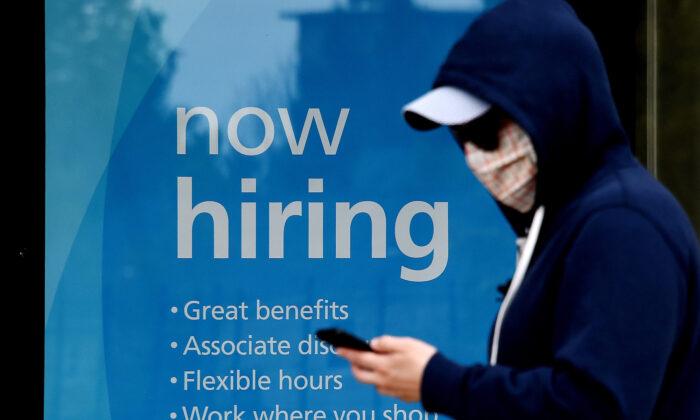Journalists reporting on union political activities typically cite the figure of $54 million as the measure of labor campaign and candidate advocacy spending in 2022, but the actual total is closer to $25 billion, according to a new analysis of mandatory expenditure reports by worker organizations.
The $54 million represents the total derived from union reports to the Federal Election Commission (FEC) for political action committees (PAC) spending during the 2022 campaign cycle.
But the analysis by the National Institute for Labor Relations Research (NILRR) of unions’ LM-2 reports to the Department of Labor, as well as additional unreported spending by the labor groups, reveals much more.
The LM-2 documents cover overall spending by labor unions, which during the 2021-2022 period reached $50 billion. Democratic candidates, causes, and committees typically receive more than 90 percent of all labor union political spending.
“The vast majority of what unions spend to influence elections and policymaking is not reported to the federal government as political activities. Some expenditures are improperly labeled as ‘grants’ or ’general overhead.' Others are tucked away in the budgets of smaller union affiliates that aren’t required to file full financial disclosures,” according to the NILRR report.
“However, the bulk of unreported political power is wielded by government union officials. They’re armed with the monopoly power to negotiate salaries, pensions, and hiring practices for entire swaths of federal, state, and local government workers. This makes monopoly bargaining in the public sector, by its very nature, political,” the report said.
“Public sector unions exist solely to change government employment policies. They have legal leverage over the policy process that other political groups do not have. Consequently, the money spent staffing, organizing, and promoting government sector unions has more of a direct impact on politics than whatever other groups spend to persuade voters,” the report continued.
“When we take into account all the inherently political money spent by public sector unions, Big Labor’s true total political spending for the 2021-2022 political cycle was over $25 billion,” according to the report.

Spokesmen for the American Federation of Government Employees (AFGE), the largest federal employee union, and the American Federation of State, County and Municipal Employees (AFSCME), which represents non-federal public employees, did not respond to The Epoch Times’ requests for comment on the NILRR analysis.

In addition to the impact of public sector unions, the major reason so much labor political spending goes unreported on official documents like FEC and LM-2 reports is labeling by union officials of such expenditures with names of non-political categories such as “Representation,” “Contributions, Gifts, and Grants,” “General Overhead,” and “Union Administration,” according to NILRR.
Among the examples of such mislabeled spending cited by the report are the $12,675,000 in grants given by the National Education Association (NEA) to the State Engagement Fund, a Left-of-Center “dark money” advocacy.
Similarly, “the AFL-CIO gave a total of $8,446,314 to Working America, a union-affiliated 501(C)(4) advocacy group that ’makes sure that the priorities of working people, their families and communities are heard from our state houses to the White House, from our city councils and school boards to the halls of Congress,'” the NILRR report said.
“Voters should remember that Big Labor’s political machine is funded by rank-and-file workers—many of whom would be fired if they decided to stop paying dues—and is being manipulated not only to wipe out workers’ individual rights, but also to rig the system against taxpayers who are seeing their government hijacked by union special interests.”







